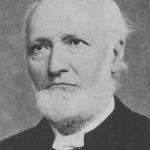
Continuing with The Book:
The Ba‘th Party took its name from an Arabic word that can mean both “renaissance” and “resurrection.” That is the promise that it made to the Arab people. But it never delivered on its promise. Instead, it represented an Arab socialism that was bound to destroy the economy of any nation that adopted it, and, like the more famous German national socialism of Adolf Hitler, it created an atmosphere of intense racism and nationalism, of hatred and paranoia directed at non-Arabs. The Kurds, who had fared badly under General Qasim, would do far worse under the Ba‘thists.
In 1979, a Ba’thist official by the name of Saddam Hussein established himself as absolute ruler of the country. Having been the second most powerful man in the government since 1968, he now had himself declared president. To consolidate his power, he eliminated the entire governing Revolutionary Command Council—his former close colleagues—within a month of assuming supreme power. (It is said that he shot them himself.) He then launched Iraq on a career of military misadventures that may be without parallel in modern times. He also created a cult of his own personality in which pictures and statues of the Great Leader occupied every public space and many private ones as well.
When Iran’s imperial government collapsed in the late 1970s, and a group of theocrats seized power, Saddam saw an opportunity to steal Iranian land and add to his own power. He therefore invaded his neighbor late in 1980, starting a war between Iran and Iraq that would finally end in a virtual stalemate after nearly a decade of fighting and hundreds of thousands of casualties. When that conflict was over, he invaded and occupied nearby Kuwait. And the rest, as they say, is history. Yet despite all his many failures, Saddam retained power for a very long time. He maintained that power by being both ruthlessly brutal and cunning. He managed to create a society in which everyone was under surveillance, and he was willing to kill even his closest friends and associates if it would serve his purposes. Indeed, he did so on many occasions.
Relatively late in his career, Saddam Hussein discovered the usefulness of religion as a weapon. His rhetoric during the Gulf crisis drew heavily on the Qur’an and Islamic tradition—something he had never really done before. He prayed on television and invoked the curse of Allah on his Western opponents—but also upon the Kuwaitis and Saudis and Egyptians and Syrians, Muslims all, who formed a part of the coalition against him. Shortly before the war, he “discovered” that he was a descendant of the Prophet. (No doubt a machine gun would have proved his genealogy for anyone who might have been skeptical.) He may have realized that the Ba‘th Party, with its secular socialist agenda, was something of a fossil and that he needed to bring it into line with the newly Islamic times. Certainly there was no reason in his past or in the records of his innumerable crimes to suggest that he had the slightest tinge of real religious belief. His cynical use of Islam to further his immoral lust for power was, in fact, an embarrassment both to the religion of Muhammad and to religions in general. Unfortunately, many in the West saw him as a Muslim leader. Anti-Islamic sentiments grew in the United States despite the fact that Saddam’s Kuwaiti victims (to say nothing of the Iraqis and particularly the Iraqi Kurds, who suffered the most from his ambitions) were themselves Muslims.
Posted from Luxor, Egypt











